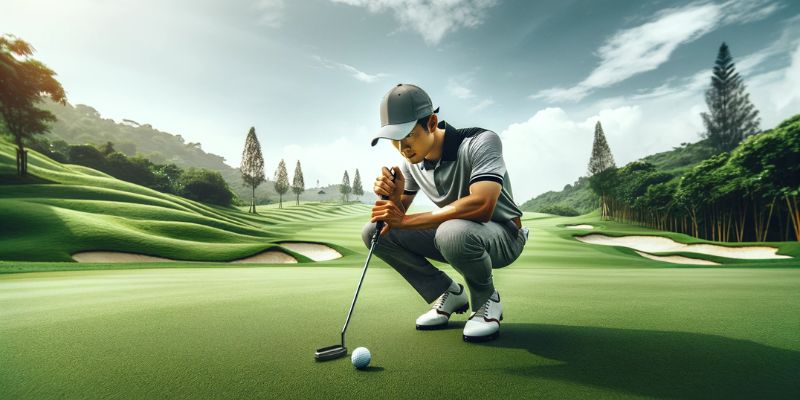Putters are more than just tools; they are the artists’ brushes of golf, each stroke determining success on the greens.
The right putter not only complements your putting style but also enhances your control and consistency, turning near-misses into confident strokes.
In this guide, we’ll explore the key features of top-performing putters, how to match a putter to your personal style, and essential maintenance tips to keep your putter in championship condition.
Key Features in Top Performing Putters
When it comes to best putters, certain features stand out that can significantly affect performance:
Balance and Feel
A putter’s balance can greatly influence its feel during a stroke, and this feel can be either face-balanced or toe-balanced.
Face-balanced putters are often recommended for players with a straight putting stroke, as they tend to stay more square to the putting line. Toe-balanced putters, on the other hand, are suited for players with an arc in their stroke, offering more control with a swinging motion.
Head Design
The design of the putter head plays a crucial role in how the putter performs.
Blade putters, with their thin and flat design, are typically favored by players who enjoy a more tactile feel and greater feedback.
Mallet putters offer more forgiveness on mis-hits and are preferred by players who prioritize stability over feel.
Materials and Construction
Modern putters are constructed from a variety of materials. Stainless steel and aluminum are common for their durability and feel, while newer materials like carbon fiber are used to reduce weight and adjust the center of gravity.
The choice of material can affect the weight, balance, and overall feel of the putter, impacting how well it performs in different conditions.
Aligning Your Putting Style with the Right Putter
Choosing the best putter is deeply personal and largely dependent on your individual putting style.
Analyze Your Stroke
Understanding whether you have a straight or arcing stroke will guide you towards a putter type that complements your natural tendencies.
Tools like stroke analyzers can provide insights into your stroke dynamics and help you make a more informed choice.
Length and Lie
The length of the putter should allow you to maintain a comfortable and natural posture, reducing strain on your back and improving accuracy.
Similarly, the lie angle of the putter should match your stance to ensure the putter head is flat against the ground at impact.
Grip Size and Shape
The grip can significantly affect your touch and control.
Larger grips can help reduce wrist action for players who struggle with consistency, while traditional thinner grips offer more wrist flexibility for experienced players who prefer finesse over stability.
Maintenance Tips for Your Putter
Keeping your best putter in excellent condition is essential for consistent performance:
Regular Cleaning
Clean your putter after every round to remove dirt and moisture.
Use a soft cloth and mild soap solution to wipe the head and shaft, and dry it thoroughly to prevent rust and damage.
Storage
Store your putter in a dry, cool place.
Avoid leaving it in extreme temperatures, such as a hot car trunk, which can damage the grip and adhesive materials used in the putter’s construction.
Check for Wear
Regularly inspect your putter for signs of wear, especially on the grip and the face.
Replacing worn grips and polishing the head can restore the original feel and improve performance.
Selecting the best putters requires consideration of many personal factors, from physical compatibility to playing style. By understanding these aspects and maintaining your equipment, you can turn putting into a true art form, with each stroke a masterful expression of skill and precision, making any of these putters a perfect gift for the avid golfer in your life.What makes a putter suitable for a beginner?
What makes a putter suitable for a beginner?
For beginners, the best putters are typically those with larger, more forgiving mallet heads and softer grips that help with stability and confidence in each stroke.
How often should you replace your putter?
There is no set rule for replacing a putter as long as it remains in good condition and continues to perform as expected. However, if noticeable wear affects performance, or if your playing style changes, it might be time to consider a new putter.
Can the type of putter really change your game?
Absolutely. The right putter can make a significant difference in your game by improving accuracy, consistency, and confidence on the green, especially in pressure situations.

